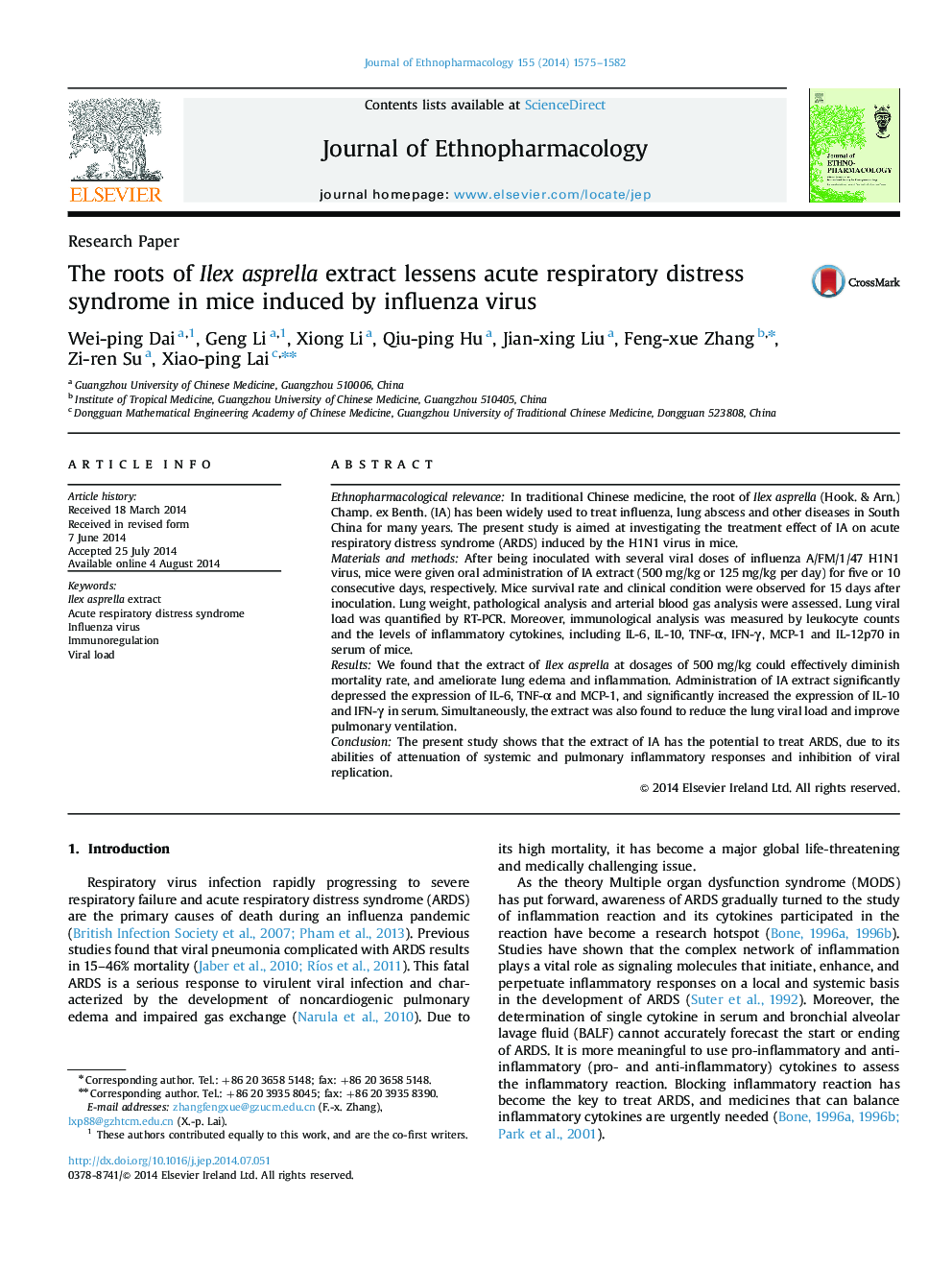| Article ID | Journal | Published Year | Pages | File Type |
|---|---|---|---|---|
| 5836617 | Journal of Ethnopharmacology | 2014 | 8 Pages |
Ethnopharmacological relevanceIn traditional Chinese medicine, the root of Ilex asprella (Hook. & Arn.) Champ. ex Benth. (IA) has been widely used to treat influenza, lung abscess and other diseases in South China for many years. The present study is aimed at investigating the treatment effect of IA on acute respiratory distress syndrome (ARDS) induced by the H1N1 virus in mice.Materials and methodsAfter being inoculated with several viral doses of influenza A/FM/1/47 H1N1 virus, mice were given oral administration of IA extract (500 mg/kg or 125 mg/kg per day) for five or 10 consecutive days, respectively. Mice survival rate and clinical condition were observed for 15 days after inoculation. Lung weight, pathological analysis and arterial blood gas analysis were assessed. Lung viral load was quantified by RT-PCR. Moreover, immunological analysis was measured by leukocyte counts and the levels of inflammatory cytokines, including IL-6, IL-10, TNF-α, IFN-γ, MCP-1 and IL-12p70 in serum of mice.ResultsWe found that the extract of Ilex asprella at dosages of 500 mg/kg could effectively diminish mortality rate, and ameliorate lung edema and inflammation. Administration of IA extract significantly depressed the expression of IL-6, TNF-α and MCP-1, and significantly increased the expression of IL-10 and IFN-γ in serum. Simultaneously, the extract was also found to reduce the lung viral load and improve pulmonary ventilation.ConclusionThe present study shows that the extract of IA has the potential to treat ARDS, due to its abilities of attenuation of systemic and pulmonary inflammatory responses and inhibition of viral replication.
Graphical abstractDownload high-res image (200KB)Download full-size image
